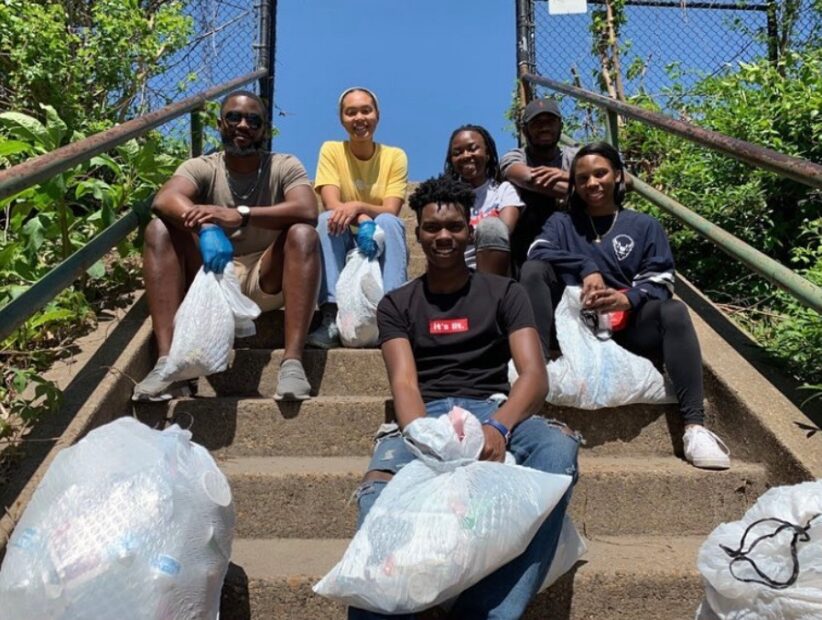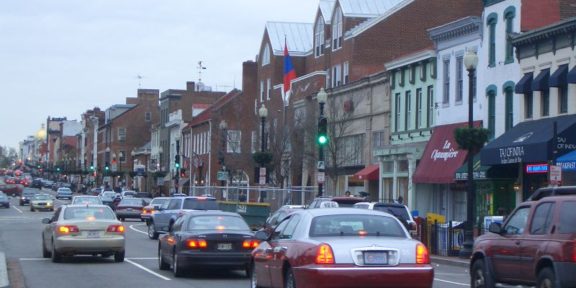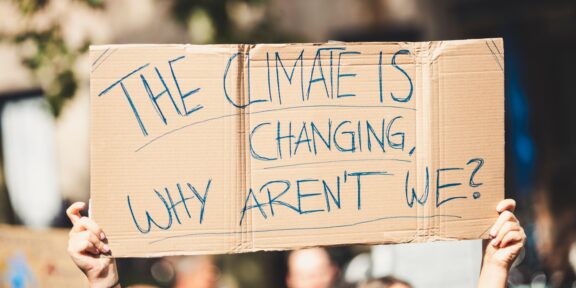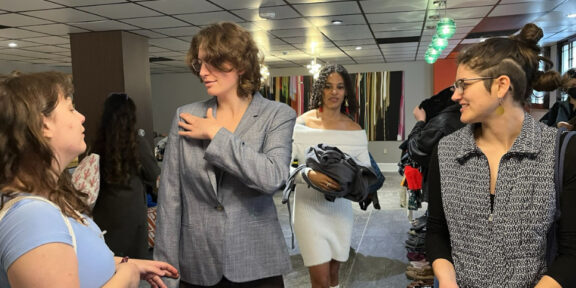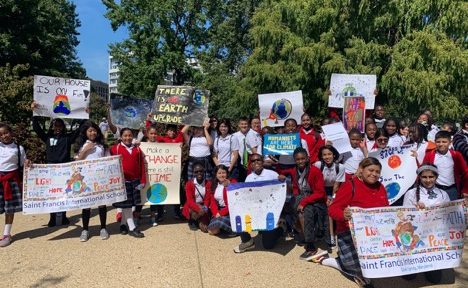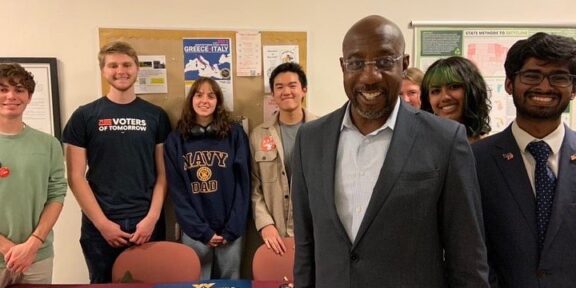By Tanyia Foster
Howard University News Service
Armed with plastic bags, Howard University students participate in “clean up Saturdays” across campus and other areas in Washington, D.C. Throughout the semester, they also host several “Come Get the Tea” events where they educate students on environmental issues like water scarcity and give them the opportunity to ask any questions they may have.
Their goal is to raise awareness on sustainability through community service as members of the Howard University Water and Climate Association. HUWEA promotes sustainable living on campus by demonstrating the ways sustainability can play into all areas of life, providing community service opportunities, and connecting students with environmentally oriented career and networking opportunities.
“It’s important to leave something better than you found it,” says Hadaiya White, a civil and environmental engineering major at Howard and president of the HUWEA. “I love to leave behind a clean and enjoyable earth for generations to come so the job will be done for them already.”
It is no surprise that HBCU students are partaking in this work as younger generations increasingly fight for sustainability. The Howard University Student Association has a department solely dedicated to sustainability along with other campus organizations fighting and educating students on climate justice. The same is true at other HBCUs, and many of their students gathered in New Orleans this month for the Eighth HBCU Climate Change Conference.
What Is Sustainability?
Sustainability directly impacts quality of life, ecosystems and natural resources. The United Nations Brundtland Commission defines sustainability as meeting our own needs without compromising the ability of future generations to meet their own needs.
Everything we do is connected and unfortunately, certain natural resources in our environment are not everlasting. If we continue to use these resources irrationally and fail to protect our environment as a whole, we run the risk of exhausting resources that future generations depend on to live their lives.
When you hear the term sustainability, it is common to think about the environment. However, it gets even deeper than that. Social equality and economic development are critical areas of focus when it comes to sustainability as well. Taking a holistic approach in harmonizing environmental, ecological, social and economic development, is the only way to ensure a better future.
Younger generations are using their voices and their power to lead the charge. Millennials and Gen Z grew up with an unprecedented awareness on social and environmental issues and they are leading the charge in creating a better environment for their generation and future generations to have a chance at living their lives.
Generation Green
“Environmental liberation is the youth moment, and environmental justice is the movement of our elders,” said Jaylin Ward, director of Diaspora Engagement at Generation Green.
Generation Green does strategy sharing by partnering with activists around the world, sharing with them what environmental liberation is.Ward amplifies that message through social media. As a small but mighty team of four, Generation Green is empowering others to do the work at the hyper-local level.
In pioneering environmental justice, Ward says, the older generation pushed the Environment Protection Agency to recognize how it has harmed black communities. While the youth feel this step is important, they see a need to take it a little further. They believe the government has played a role in many environmental issues in B lack communities, causing diseases and skin conditions. Environmental l iberation is the next step, as the baton has been passed on so that older generations do not have to fight all of their lives.
Ward also encourages everyone to get out and take inventory of the environmental issues in their communities and be a part of the change.
Black Millennials 4 Flint
Black Millennials 4 Flint is a national environmental justice and civil rights organization founded by LaTricea Adams. The organization began its work by bringing in donations to the Buffalo Urban League Young Professionals Chapter for a F lint service trip.
Rooted in community, education, Black & Latnix lives, leadership and equity, Black Millennials 4 Flint is a collective group of Black millennials who are bringing like-minded organizations together to take action and advocate against the crisis of lead exposure specifically in African American and Latinx communities throughout the nation.
Some of the organization’s work consists of a variety of training, community outreach, speaking engagements and providing community resources.
Staying connected to where it all started, Black Millenials 4 Flint has a tick counter on the homepage of their website , serving as a reminder that it has been seven years and counting since the city of Flint was poisoned.
The Power of Social Media
Spreading the word and bringing awareness to sustainability is just as important as any other actionable steps. With social media being such a heavy influence, it is a great platform to do s
M any people are serving as environmental influencers, educating and encouraging their audiences to join in on climate justice.
One influencer is Ashley Renne whose social media handles are @heyashleyrenne. She is an environmental activist who advocates for people of color, the planet and animals through her social media accounts, as well as a podcast. Renne has 92.9k followers on Instagram, 40 k subscribers on Youtube, a podcast and a blog. Renne’s content is centered around living a vegan lifestyle, adding sustainability to daily activities, sustainable tech and being a mom.
Renne gave a speech at the Atlanta Climate Action Now – The Great American Build Tour, in which she stated “through my work I hope to inspire people to live more sustainable lives.” She also said that the climate crisis is getting worse and that we need all hands on deck to make it better.
The Pillars of Sustainability
Sustainability can be broken into three main pillars: Environmental, Economic and Social Sustainability.
Environmental Sustainability refers to the protection and conservation of our ecosystem. Maintaining the health of our environment allows us to maintain our own health. Our choice of transportation, how often we use energy, the products we use and the food we eat, all align with environmental sustainability. Conserving water, using less energy and purchasing recyclable products are some examples of the way we can move towards creating a more sustainable environment.
Economic Sustainability refers to the economy and economic production. Essentially, we want to continue economic growth and success without negatively impacting social and environmental sustainability. While some may worry that growing the economy and an increase in population has a negative impact, studies show that this can in fact be done without compromising the other aspects. Process Street suggests that the way to achieve economic sustainability is by changing our current practices and finding ways to have our economy and current way of life adapt.
Social Sustainability refers to creating formal and informal processes, systems, structures and relationships that allow for a good quality of life for everyone. During these times, this falls heavily under Diversity, Equity, and Inclusion in many ways. Accessibility to things like health care, human rights, community engagement, and safe and healthy living conditions for everyone are some of the ways we can achieve social sustainability.
Environmental Racism In Black Communities
Although the entire world is impacted, just like in many other cases, people of color and their communities are hit the hardest. Environmental racism directly leads to people of color being disproportionately affected by climate change.
Unequal access to a clean environment based on race is e nvironmental r acism. Environmental hazards are placed in communities of color causing them to be disproportionately exposed to things like pollution, lead poisoning, water contamination and hazardous waste sites. A study from 1983 showed that 75% of hazardous waste landfill sites were low- income communities of color.
Communities of color tend to have lower property values. This means that it is cheaper for industrial companies to acquire land in those areas. This creates hazardous waste sites being placed in these communities, ultimately leading to a greater amount of air pollution. Air pollution can lead to various illnesses and diseases, which are also generally higher within the Black population as opposed to white counterparts.
The use of lead paint tends to be prevelevant in low- income communities, affecting children of color who then contract lead poisoning. A report by Lead Safe Illinois showed that children in Chicago who are Hispanic and African American were five times and 12 times more likely to be poisoned by lead, compared to white children.
Another impact of environmental racism that is commonly seen in communities of color is water contamination. NRDC reported that communities of color are more likely to suffer drinking water violations for years. These communities often have water systems that are not properly functioning. A lthough these systems violatethe law, getting them fixed has become a hassle often left unresolved due to racism.
Climate change has a huge impact on temperatures. Extreme temperatures and natural disasters disportionately affect communities of color, leading to illnesses and even death.
Younger Generations Have the Power to Make a Difference
The Pew Research Center reports that younger Millennials and Gen Z are more active in the fight to address climate change than older generations. They are taking action both online and offline.
Younger generations are using their voices via digital platforms and social media to promote sustainability messaging to content and conversations and raising and donating to environmental initiatives. They are also the ones at the forefront of rallies and protests.
Younger generations are the ones who are here living through the impact of the climate justice taking place now. Many millennials and Gen Z are frustrated and feel not enough is being done. T hey are taking matters into their own hands to help build sustainable communities for themselves and the generations after them.
Tanyia Foster is a reporter for HUNewsService.com.

